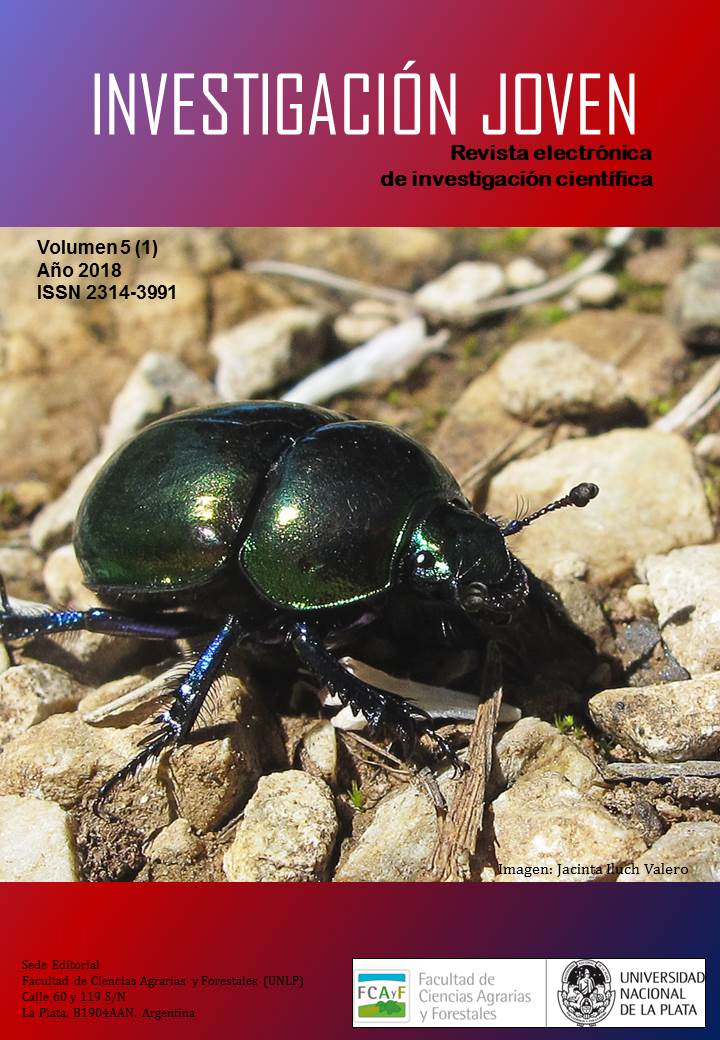Quitina: Compuesto natural y práctico
Keywords:
Chitin, Chitosan, Antioxidant, Antimicrobial, PolycationicAbstract
Chitin is a N-acetYl-glucosamines polysaccharide which, when it is subjected to a deacetylation
process is renamed chitosan. Both compounds have many applications in many areas and industries, thanks to
characteristics such as its antimicrobial activity, its biodegradability, its biocompatibility, its antioxidant, filmogenic,
or emulsifying capacity. Among the areas where these biomaterials can be applied and bring great advantage are
included food, agriculture, biomedicine, water treatment, cosmetics or nanotechnology.
Downloads
References
[2] E. Agulló, Rodríguez M.S., V. Ramos, L. Albertengo, “Present and future role of chitin and chitosan in food”, Macromolecular Bioscience, 3, 2003, 521-530.
[3] K.H. Prashanth & R.N. Tharanathan. “Chitin/chitosan: modifications and their unlimited application potential—an overview”. Trends in food science & technology, 18, 2007, 117-131.
[4] Z. Mármol, G. Páez, M. Rincón, K. Araujo, C. Aiello, C. Chandler, E. Gutiérrez, “Quitina y Quitosano polímeros amigables. Una revisión de sus aplicaciones/Chitin and Chitosan friendly polymer. A review of their applications”, Revista Tecnocientífica URU, 1, 2013, 53-58
[5] I. Younes & M. Rinaudo, “Chitin and chitosan preparation from marine sources. Structure, properties and applications”, Marine drugs, 13, 2015, 1133-1174.
[6] M.N.R. Kumar, “A review of chitin and chitosan applications”. Reactive and functional polymers, 46, 2000, 1-27.
[7] M. Rinaudo, “Chitin and chitosan: properties and applications”, Progress in polymer science, 31, 2006, 603-632.
[8] A. Alishahi & M. Aïder, “Applications of chitosan in the seafood industry and aquaculture: a review”. Food and Bioprocess Technology, 5, 2012, 817-830.
[9] J. Dutta, S. Tripathi, P.K. “Dutta, Progress in antimicrobial activities of chitin, chitosan and its oligosaccharides: a systematic study needs for food applications”, Food Science and Technology International, 18, 2012, 3-34.
[10] G.M. Saavedra, N.E. Figueroa, L.A. Poblete, S. Cherian, C.R. Figueroa, “Effects of preharvest applications of methyl jasmonate and chitosan on postharvest decay, quality and chemical attributes of Fragaria chiloensis fruit” Food chemistry, 190, 2016, 448-453.
[11] M. Larsson, W.C. Huang, M.H. Hsiao, Y.J. Wang, M. Nydén, S.H. Chiou, D.M. Liu, “Biomedical applications and colloidal properties of amphiphilically modified chitosan hybrids”, Progress in Polymer Science, 38, 2013, 1307-1328.
[12] C. Lárez-Velásquez, “Quitina y quitosano: materiales del pasado para el presente y el futuro”, Avances en química, 1, 2006, 15-21.
[13] F. Ding, H. Deng, Y. Du, X. Shi, Q. Wang, “Emerging chitin and chitosan nanofibrous materials for biomedical applications”, Nanoscale, 6, 2014, 9477-9493.
[14] R.C.F. Cheung, T.B. Ng, J.H. Wong, W.Y. Chan, “Chitosan: an update on potential biomedical and pharmaceutical applications”, Marine drugs, 13, 2015, 5156-5186.
[15] V. Patrulea, V. Ostafe, G. Borchard, O. Jordan, “Chitosan as a starting material for wound healing applications”, European Journal of Pharmaceutics and Biopharmaceutics, 97, 2015, 417-426.
[16] W.C. Lin, C.C. Lien, H.J. Yeh, C.M. Yu, S.H. Hsu, “Bacterial cellulose and bacterial cellulose–chitosan membranes for wound dressing applications”, Carbohydrate polymers, 94, 2013, 603-611.
[17] M. Bittelli, M. Flury, G.S. Campbell, E.J. Nichols, “Reduction of transpiration through foliar application of chitosan”, Agricultural and Forest Meteorology, 107, 2001, 167-175.
[18] M.A. Ramírez, A.T. Rodríguez, L. Alfonso, C. Peniche. “Chitin and its derivatives as biopolymers with potential agricultural applications” Biotecnología Aplicada, 27, 2010, 270-276.
[19] R.G. Sharp, “A review of the applications of chitin and its derivatives in agriculture to modify plant-microbial interactions and improve crop yields”, Agronomy, 3, 2013, 757-793.
[20] C.L. Velásquez, “Algunas potencialidades de la quitina y el quitosano para usos relacionados con la agricultura en Latinoamérica”, Revista UDO Agrícola, 8, 2008, 1-22.
[21] H. Kaku, Y. Nishizawa, N. Ishii-Minami, C. Akimoto-Tomiyama, N. Dohmae, K. Takio, N. Shibuya, “Plant cells recognize chitin fragments for defense signaling through a plasma membrane receptor”, Proceedings of the National Academy of Sciences, 103, 2006, 11086-11091.
[22] G.Z. Kyzas & D.N. Bikiaris, “Recent modifications of chitosan for adsorption applications: A critical and systematic review”, Marine drugs, 13, 2015, 312-337.
[23] A. Cooper, R. Oldinski, H. Ma, J.D. Bryers, M. Zhang, “Chitosan-based nanofibrous membranes for antibacterial filter applications”, Carbohydrate polymers, 92, 2013, 254-259.
[24] A. Ávalos, A.I. Haza, D. Mateo, P. Morales, “Nanopartículas de plata: aplicaciones y riesgos tóxicos para la salud humana y el medio ambiente/Silver nanoparticles: applications and toxic risks to human heatlh and environment”. Revista Complutense de Ciencias Veterinarias, 7, 2013, 1.
[25] N.M. Ahyat & A.A. Azmi, “A Review on Chitin Derivatives and its Uses in Silver Nanoparticles Synthesis”. Middle-East Journal of Scientific Research, 24, 2016, 2159-2165.
















